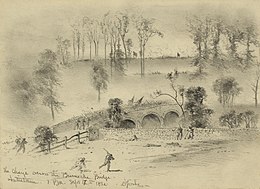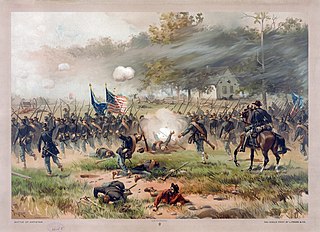
The Battle of Antietam, or Battle of Sharpsburg particularly in the Southern United States, was a battle of the American Civil War fought on September 17, 1862, between Confederate Gen. Robert E. Lee's Army of Northern Virginia and Union Gen. George B. McClellan's Army of the Potomac near Sharpsburg, Maryland, and Antietam Creek. Part of the Maryland Campaign, it was the first field army–level engagement in the Eastern Theater of the American Civil War to take place on Union soil. It remains the bloodiest day in American history, with a tally of 22,727 dead, wounded, or missing on both sides. Although the Union Army suffered heavier casualties than the Confederates, the battle was a major turning point in the Union's favor.
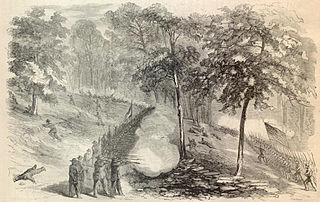
The Battle of South Mountain, known in several early Southern accounts as the Battle of Boonsboro Gap, was fought on September 14, 1862, as part of the Maryland campaign of the American Civil War. Three pitched battles were fought for possession of three South Mountain passes: Crampton's, Turner's, and Fox's Gaps.
The 50th Georgia Infantry Regiment was an infantry regiment raised by the state of Georgia to fight for the Confederacy in the American Civil War.
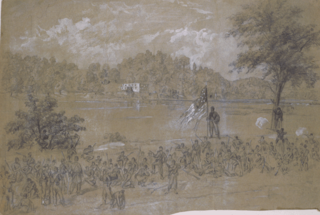
The Battle of Shepherdstown, also known as the Battle of Boteler's Ford, took place September 19–20, 1862, at Boteler's Ford along the Potomac River, during the Maryland campaign of the American Civil War. After the Battle of Antietam on September 17, General Robert E. Lee and the Confederate Army of Northern Virginia withdrew across the Potomac. Lee left a rear guard commanded by Brigadier General William N. Pendleton at Boteler's Ford. On September 19, elements of the Union V Corps dueled with Pendleton's artillery before pushing a short distance across the river at dusk. Pendleton inaccurately informed Lee that all of the artillery of the rear guard had been captured. On the morning of September 20, the Confederates counterattacked with A. P. Hill's Light Division, forcing the Union units back across the Potomac. One Union unit, the 118th Pennsylvania Infantry Regiment, did not withdraw at the same time as the others and suffered heavy losses. Lee's army continued its retreat into the Shenandoah Valley after the battle.

Alexander Gardner was a Scottish photographer who immigrated to the United States in 1856, where he began to work full-time in that profession. He is best known for his photographs of the American Civil War, U.S. President Abraham Lincoln, and of the conspirators and the execution of the participants in the Lincoln assassination plot.

Antietam Creek is a 41.7-mile-long (67.1 km) tributary of the Potomac River located in south central Pennsylvania and western Maryland in the United States, a region known as the Hagerstown Valley. The creek became famous as a focal point of the Battle of Antietam during the American Civil War.
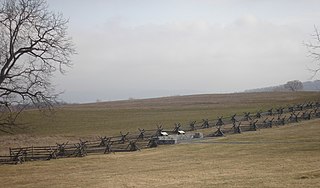
Antietam National Battlefield is a National Park Service-protected area along Antietam Creek in Sharpsburg, Washington County, northwestern Maryland. It commemorates the American Civil War Battle of Antietam that occurred on September 17, 1862.

Isaac Peace Rodman was a Rhode Island banker, politician, and a Union Army brigadier general in the American Civil War, who became mortally wounded at the Battle of Antietam.
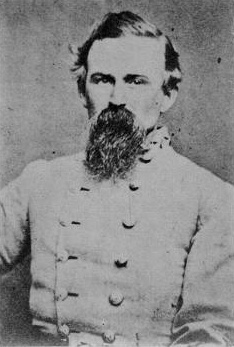
George Pierce Doles was an American businessman and Confederate general during the American Civil War. His men played a key role on the first day of the Battle of Gettysburg in driving back the Union XI Corps.
The 2nd Maryland Infantry was an American military regiment in the Union Army during the American Civil War. It should not be confused with the 2nd Maryland Infantry, CSA, which was composed of Maryland volunteers who fought for the Confederacy during the war. The regiment fought at numerous battles during the course of the war, and lost 5 officers and 84 men killed and wounded, plus 3 officers and 134 men died of disease, for a total of 226 casualties.
The following Confederate States Army units and commanders fought in the Battle of Antietam of the American Civil War. The Union order of battle is listed separately. Order of battle compiled from the army organization during the campaign, the casualty returns and the reports.
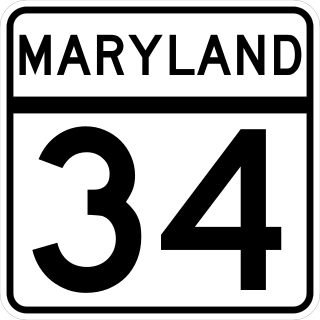
Maryland Route 34 is a state highway in the U.S. state of Maryland. Known for most of its length as Shepherdstown Pike, the state highway begins at the West Virginia state line at the Potomac River, where the highway continues south as West Virginia Route 480 through Shepherdstown. The state highway runs 9.95 miles (16.01 km) east to U.S. Route 40 Alternate in Boonsboro. MD 34 is the main east–west highway of southern Washington County, connecting Shepherdstown and Boonsboro with Sharpsburg and Keedysville. The state highway, which was preceded by the Boonsboro and Sharpstown Turnpike, was constructed as a modern highway in the late 1910s and early 1920s. MD 34's bypass of Keedysville opened around 1960. The western end of the state highway has had three bridges. A 19th-century bridge was destroyed in a 1936 flood and replaced by the James Rumsey Bridge in 1939. The present bridge, also named for James Rumsey, opened in 2005.

Jacob Eugene Duryée was a lieutenant colonel in the Union Army during the American Civil War, who received the brevet grade of brigadier general of volunteers in 1867.

The 8th Connecticut Infantry Regiment was an infantry regiment that fought in the Union Army during the American Civil War.

James Nagle was an officer in the United States Army in both the Mexican–American War and the American Civil War. During the latter conflict, he recruited and commanded four infantry regiments from the commonwealth of Pennsylvania and led two different brigades in the Eastern Theater. As the war progressed, worsening health problems precluded prolonged field service, but Nagle is perhaps best known for his actions at the 1862 Battle of Antietam, where his brigade played a key role in securing Burnside's Bridge, a key crossing over the contested Antietam Creek.
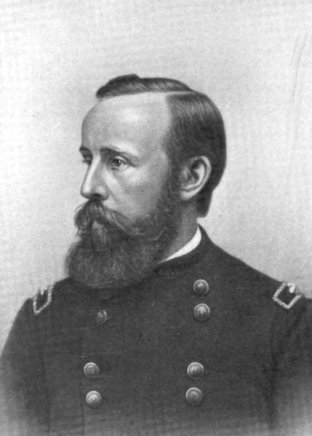
Edward Harland was a Union general during the American Civil War. He was associated with early battles of the IX Corps as well as Union involvement in North Carolina and the Tidewater region of Virginia.
The 48th Regiment Pennsylvania Volunteer Infantry, the "Schuylkill Regiment", was an infantry regiment of the Union Army during the American Civil War.

The 51st New York Infantry Regiment was an infantry regiment in the Union Army during the American Civil War.
The 51st Pennsylvania Volunteer Infantry was an infantry regiment that served in the Union Army during the American Civil War.

Thomas Sloan Bell Jr. was an American soldier who served as a Union Army lieutenant colonel of the 51st Pennsylvania Infantry Regiment during the American Civil War. He was killed in action at the Battle of Antietam shortly after capturing a key stone bridge over Antietam Creek held by Confederate troops.


